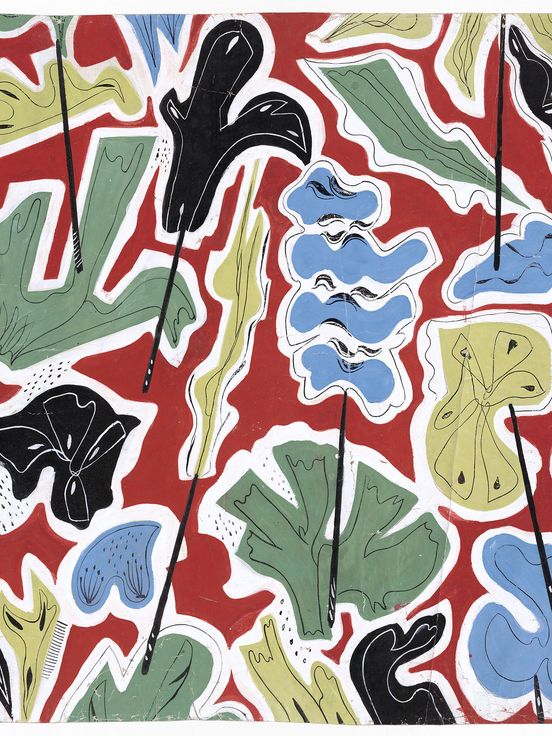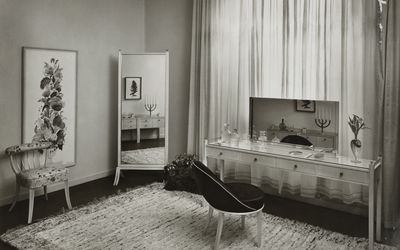Ruth Hildegard Geyer-Raack (1894–1975) was a renowned interior designer and designer of murals, fabrics, wallpapers, and furniture. She studied painting at the Teaching Institute of Berlin’s Kunstgewerbemuseum (Decorative Arts Museum). It was directed by the architect and furniture designer Bruno Paul (1874–1968), with whom Geyer-Raack later collaborated. In 1920 and 1921 she attended the summer semester at the Weimar Bauhaus and traveled several times to Paris for study purposes.
In 1924 Geyer-Raack opened her own studio in Berlin. She specialized in high-quality interior design for chic lifestyles. She produced innovative designs that brought contrasting furnishing styles, such as the Bauhaus and Art Déco, into harmonious unison. As artistic director of the International Interior Design Exhibition in Cologne in 1931, she became known well beyond Berlin.
She presented there a diverse cross section of contemporaneous ideas for housing by the international architectural avant-garde. In the wake of the Great Depression and the World War II, her commissions declined considerably. A few months after Hitler's appointment as the new Reich Chancellor, she joined the NSDAP on 1 May 1933 and was a member of the National Socialist institutions NS-Frauenschaft, NS-Volkswohlfahrt and Reichskulturkammer. On 28 September 1948, Geyer-Raack was denazified. In 1955 she went blind in one eye. However, she continued to work until the end of her life in 1975.

![[Translate to English:] Ruth Hildegard Geyer-Raack, Stoffcoupon und Papierentwurf, um 1932 Ruth Hildegard Geyer-Raack, fabric coupon and textile design, c. 1932](/assets/_processed_/2/a/csm_B0099930_ccfd104569.jpg)

